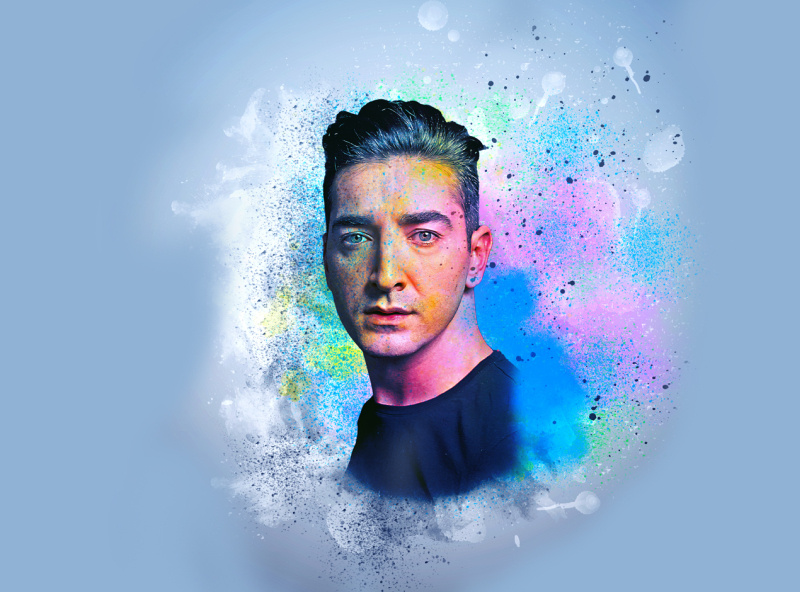

Under paintings can be created by hand, as in the Painter sample above or by using automated effects. This means that “paint” is applied to everything in a loose general manner. Once the composition is completed the next step is to arrive at an Under Painting stage.

The reason for using the two source images is that it allows the artist to “erase”, ghost in or work the background separately from the subject. The composition and under painting are simultaneously created in this example.

The composition was laid out on the blank canvas using two chalk variants and a Soft Cloner on Basic Paper to create a classic chalk style of painting. The additional file containing the subject was opened as a second Clone Source option. The Background file was Quick Cloned (duplicated and cleared to a white canvas) automatically assigning the original background as a Clone Source (reference image). The second image above was pre-composed in Painter as two versions, the background and the background with the subject. This pre-composition lends itself well to the classic photo realistic styles of paintings that are popular products of portrait studios. At this point it is ready to become a painting and is a great way to begin when an artist wants to keep most of the detail of the original image. It was created in just minutes using layers, masks and adjustments. The first image above is a typical image composition that an artist might create for a painting using Photoshop. In my opinion, Photoshop’s cut and paste technology is faster and smoother than Painter’s, but Painter’s ability to resource multiple clone sources from a single canvas using its extensive range of creative tools like paper texture, flow maps and literally hundreds of brush looks offers more artistic options. Many times artists will combine multiple images in order to come up with the perfect composition. In either case, the first step in painting is generally creating the composition. Painter artists occasionally use layers, but spend most of the time painting, blending and working with specialty brushes. Photoshop painters incorporate layers, opacity adjustments, masks, image adjustments, blending modes, effects AND brushes. In my opinion, the process of painting in Adobe Photoshop is more of an imaging experience while with Corel Painter you get more of an organic painting experience. I do not feel inconvenienced moving from one program to the other.
PHOTOSHOP WITH PAINT PROFESSIONAL
Personally, I wouldn’t give up my Corel Painter or my Photoshop!Īs a professional digital artist, I use Corel Painter for drawing and painting, and Adobe Photoshop for photo retouching, image adjustments, and making composites. It is true that you can paint in both programs, and, depending on how you want to work, how much you want to learn, and how much you want to budget for software, you’ll find a solution that works for you. One thing is certain, though – the statement, “You can do the same thing in either program” isn’t exactly true. The purpose of this article is not to declare one the outright champion, but to help you make a decision about which you’ll prefer for your needs. However, despite their differences, lovely paintings can be created in both of these programs.ĭigital artists may favor one over the other, or, like me use a mix of both Photoshop and Painter. Two very different programs with different tools and different painting processes.


 0 kommentar(er)
0 kommentar(er)
